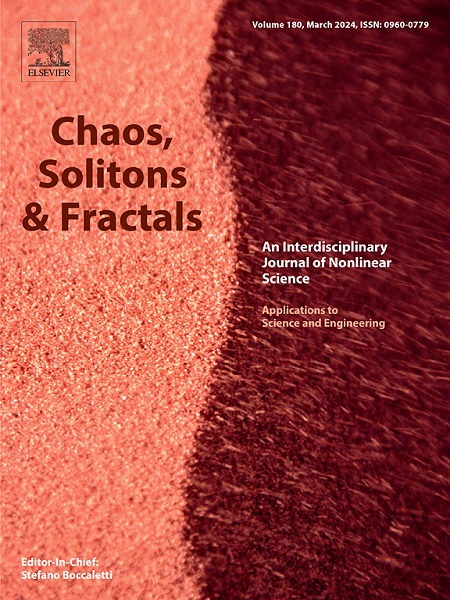A dynamic station-line centrality for identifying critical stations in bus-metro networks
IF 5.3
1区 数学
Q1 MATHEMATICS, INTERDISCIPLINARY APPLICATIONS
引用次数: 0
Abstract
Accurate identification of critical stations is essential for urban public transport networks (UPTNs). However, existing methods mainly focus on the static network structure and single transport systems, limiting their capacity to accurately capture the time-varying importance of stations. To address the limitation, this paper proposes a new method named dynamic station-line centrality (DSLC) to accurately identify the critical stations within bus-metro networks. Initially, this paper constructs a bus-metro load network (BMN) model to address the interaction between bus and metro systems. BMN can effectively reveal the connection tightness between stations, track transfers between different systems, and monitor dynamic passenger flows. Subsequently, we propose DSLC to accurately assess and quantify the time-varying importance of stations. Specifically, a topology enhancement strategy leveraging dynamic passenger flows and community structures is proposed to enhance the topology characteristics of nodes with great passenger flow significance, while overcoming the reliance on time-consuming shortest path algorithms. Additionally, DSLC addresses the identification of time-varying node importance by integrating the reinforcing relationship between stations and server lines. Extensive experiments on a public dataset of Shanghai BMN and comparison to the state-of-the-art methods validate the effectiveness of DSLC in enhancing the robustness and mitigating the propagation of cascading failures. Moreover, DSLC achieves an average improvement of 25.54% in passenger flow loss compared to the suboptimal algorithms, providing valuable insights for traffic managers.
求助全文
约1分钟内获得全文
求助全文
来源期刊

Chaos Solitons & Fractals
物理-数学跨学科应用
CiteScore
13.20
自引率
10.30%
发文量
1087
审稿时长
9 months
期刊介绍:
Chaos, Solitons & Fractals strives to establish itself as a premier journal in the interdisciplinary realm of Nonlinear Science, Non-equilibrium, and Complex Phenomena. It welcomes submissions covering a broad spectrum of topics within this field, including dynamics, non-equilibrium processes in physics, chemistry, and geophysics, complex matter and networks, mathematical models, computational biology, applications to quantum and mesoscopic phenomena, fluctuations and random processes, self-organization, and social phenomena.
 求助内容:
求助内容: 应助结果提醒方式:
应助结果提醒方式:


